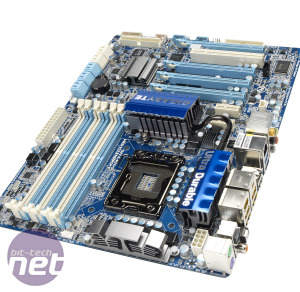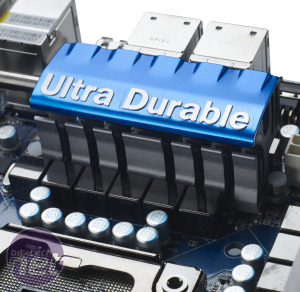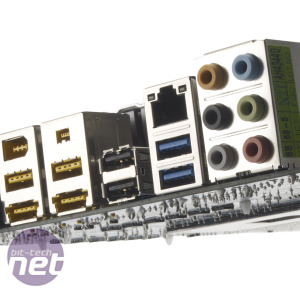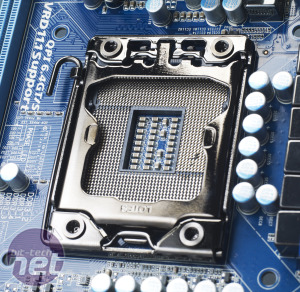Gigabyte GA-X58A-UD3R (rev. 2) Motherboard Review
Manufacturer: GigabyteUK Price (as reviewed): £149.42 (inc VAT)
US Price (as reviewed): $209.99 (ex. tax)
The Gigabyte GA-X58A-UD3R was our favourite (relatively) low price X58 motherboard when it was first released; its keen price and excellent overclocking potential meant that it was an instant favourite in our office. However, when we originally tested the updated rev 2 version in Custom PC, we found a serious issue with its BIOS. This has now been fixed via an update, so here's the revised, updated, definitive review of the Gigabyte GA-X58A-UD3R (rev 2).
As we just mentioned, the UD3R (rev 1) was significantly cheaper than its competitors, which was one of the principle reasons we loved it. The UD3R (rev 2) enters a slightly changed market though, as the Asus P6X58D-E (which we’ll review tomorrow) has dropped in price: there is now no difference in price between the two boards. Clearly Gigabyte will hope its revision to the UD3R will bring enough improvements to distinguish it from the competing P6X58D-E.
Layout
Initially, there’s very little to distinguish the UD3R (rev 2) from the original. Both boards have the same layout, with chunky heatsinks to cool the chipset and VRM circuitry. The UD3R (rev 2) also has the same number of expansion slots as its excellent forebear, with two 1x PCI-E slots sitting above four 16x PCI-E slots, and a single PCI slot.The borderline-excessive ten SATA ports are still present on the UD3R (rev 2), with the six SATA 3Gbps ports of the Intel ICH10R Southbridge coloured light blue. Confusingly, the two SATA 6Gbps ports are the same colour as the additional pair of SATA 3Gbps, which are powered via Gigabyte’s SATA2 chip. You have to read the tiny writing on the board to make sure that you plug your shiny new SATA 6Gbps SSD into the right socket. Thankfully, the UD3R (rev 2) allowed us to install Windows with our C: drive plugged into any of these SATA ports, unlike the original.
The back panel connectors are identical to those of the UD3R (rev 1), with keyboard and mouse PS/2 ports, coaxial and optical S/PDIF outputs, and a clear CMOS button. The latter feature is a nice addition but we generally prefer it when a CMOS clear button is on the PCB of the board rather than on the back panel. We can’t be the only ones to have accidentally pushed a back-panel-mounted CMOS clear button when trying to attach a new USB device to our computer.
You shouldn’t run out of USB ports though, as the UD3R (rev 2) provides eight on the back panel, two of which are USB 3. Gigabyte also provides two eSATA ports, just in case the ten SATA ports inside the case aren’t enough. The rear IO is rounded off by a single Ethernet port, a mini-FireWire and a FireWire port, and the normal six audio jacks.
What's New?
So far, the UD3R (rev 2) is very similar to the original – to see the differences, you have to look very closely. The new board includes Gigabyte’s new On/Off USB Charge technology that maintains the power supply to your front panel USB ports even when the computer is turned off – as long as you use the correct USB header (it’s the bright red one).Gigabyte also claims that this header provides three times as much power as that of a standard USB port, meaning that gadgets such as iPhones charge up to 40 per cent quicker. However, we can’t help but wonder if this extra power could present a problem for a gadget that wasn’t expecting it.
The VRMs of the board have also been revised, and the UD3R (rev 2) sports a 12-phase power circuit for the CPU rather than the 8-phase of the previous version. This should be a positive move, as the VRMs are responsible for stabilising the power delivery to the CPU – more phases should mean a more stable power supply, which will help with stability during overclocking.
We’re dubious about the value of this addition, though, as our tests didn’t reveal any problems with the power circuitry of the first UD3R, even with our power-hungry, 6-core Gulftown CPU overclocked to 4.4GHz. As they say, if it isn’t broken, don’t fix it.
Specifications
- Chipset Intel X58
- CPU support LGA 1366 Core i7, Core i7 Extreme Edition
- Memory support 6 slots: max 24GB DDR3 (2,200MHz)
- Expansion slots Four 16x PCI-E 2.0 slots (two 16x and two 1x or four 8x), one PCI, two 1x PCI-E
- Sound Intel HD Audio via Realtek ALC889 with 8-channel support
- Networking Realtek 811D Gigabit Ethernet
- Overclocking CPU Clock 100 – 600MHz; max voltages, CPU 1.9V, QPI/VTT 2.05V, PLL 2.52V, IOH 2V, ICH 2V, RAM 2.2V
- Ports 8 x SATA 3Gbps, 2 x SATA 6Gbps, 2 x PS/2, 12 x USB 2, 2 x USB 3, 2 x FireWire, Mini FireWire, LAN, 2 x eSATA 3Gbps, 4 x surround audio out, line in, mic, optical and coxaial S/PDIF out
- Dimensions (mm) 305 x 244 (ATX)

MSI MPG Velox 100R Chassis Review
October 14 2021 | 15:04













Want to comment? Please log in.